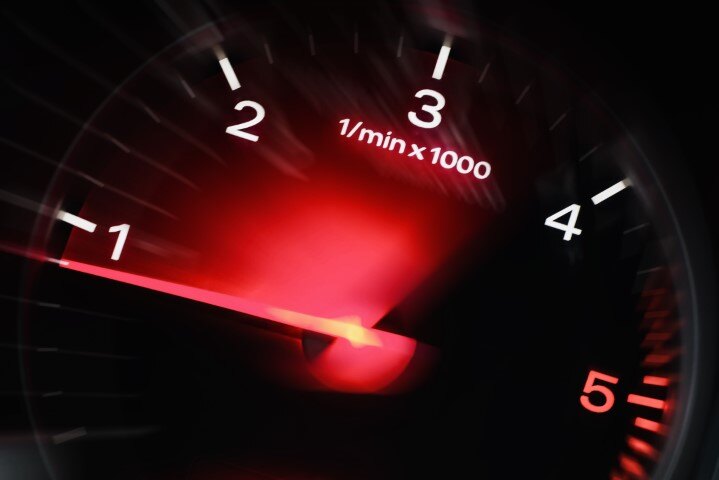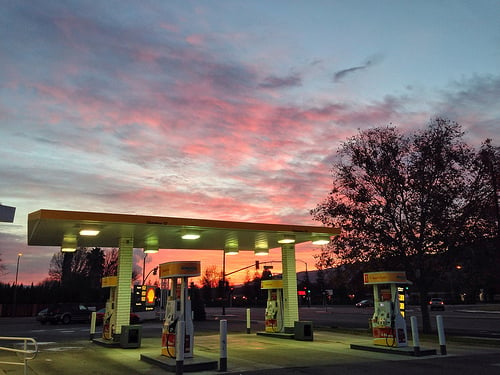Is Running Your Car Low On Gas Bad for Your Fuel System?
Talk to an older driver, and at least some of them will talk about always going to fill up the car with gas before their tank hits a quarter or below.

As the pandemic gets further and further back in our rearview mirror (hopefully), summer road trips are making their way back into our plans. By the time summer 2022 concludes, it’s likely that over 200 million Americans will have hit the road at least once. That’s expected to be an increase of more than 35 million more than 2021 saw. And don’t even talk about 2020.
With road trips, the fun is in the experience. Summer road trips and vacations have a unique place in the American experience. So we wanted to put together a little primer with some tips and suggestions on how to make your summer road trip or driving vacation the best it can be.
Just like we always do, we’ll give some tips on how to get the best mileage and how to make sure your vehicle is in prime working order. But we’ll also throw in some more interesting things, too. What are they? You’ll have to "drive" on to find out!
For the first order of business, no summer road trip works well if you’ve broken down because the car has had problems. So let’s get that business out of the way with some tips on making sure your car is in the best driving condition before you hit the road.
No doubt about it, the tires are the most overlooked part of the car, especially when it comes to safety. Yes, tires are part of the vehicle’s safety system. They maintain contact with the road and work with the braking system to ensure you actually stop at the red light and not in the shop window across the street.
The best way to ensure your tires work properly, believe it or not, is to have them at the right pressure. There are two numbers to pay attention to. Your tires themselves will list on the side wall what their maximum tire pressure is.
That’s not the one you want to go by.
Instead, go with the recommended tire pressure provided by your vehicle’s maker. It’s located either on the side of the driver-side door, on the glovebox door, or in your owner’s manual. The reason you want to go by this figure and not the maximum figure is that tire pressure increases as the temperature goes up. And since this is a summer road trip, the tire pressure could be 5-10 psi higher on the highway than when you started out. Excessive tire pressure increases the chance of a tire blowout on the road.
Having the correct tire pressure will keep you safest, and give you the best handling, and best mileage. Safety aside, what's wrong with going over or under? Overinflating the tires, as we just said, might give you better gas mileage but is dangerous. Underinflating the tires gives you worse gas mileage and wears your tires out quicker on the edges.
Speaking of tire edges, look at your tire tread before you start any trip. The proper depth of tire tread will keep you on the road in the rain. You’re looking for uneven wear patterns on one or the other side. If it’s more worn on one side, go get an alignment. Alignments cost a little upfront but save you money in the long run by keeping your tires from wearing out prematurely.
Your cooling system works hard in the heat of the summer to keep the car functioning. When we say cooling system, we don't mean the AC - we’re talking about the system that keeps your engine from melting. The cooling system has a number of parts, and since few of us are very skilled at diagnosing coolant problems, the best thing to do is have your system checked out by a good mechanic before you leave. You do not want to be driving across the Arizona desert with a bad cooling system. That's a recipe for a road trip to remember in a bad way.
Here’s a brief rundown of the cooling system parts, so you can at least appear like you understand what your mechanic is telling you:
Radiator core – the core is the little tubes in the radiator that hold coolant. For those up North, long-term exposure to road salt rots these tubes away over time. If they fail, it's bad news if you’re driving and it happens. Or the tubes in the core can get plugged, which means your engine will run hot when you’re driving at high speeds. A radiator flush is a good idea here to make sure the cooling system will function at its best when you need it the most.
Belts and hoses – check for small cracks in the rubber and make sure the hoses are still tight and clamped. Your mechanic should have a service history on your vehicle and be able to advise if certain hoses have reached or exceeded their recommended life.
Coolant and thermostat – your radiator needs coolant antifreeze in order to work properly. But keep an eye on your thermostat. They do eventually wear out and get stuck, which will cause engine overheating. If you haven’t had a new thermostat in a few years, get a new one before your trip.
Water pump – the water pump circulates…..water. I know, right? Good mechanics will replace the water pump when they replace the timing belt. You don’t want your water pump to break because it will cause all your coolant to leak out. And that’s bad news if you want to continue doing any actual road tripping from that point forward.
Cooling fan and heater core – a cooling fan sounds like something important, and it is. But the heater core is just as important for your cooling system. That’s because the heater core keeps your coolant from leaking out all over the place. You don’t want a busted heater core.
This seems like a given necessity for a summer road trip, especially if you’re going to someplace like Florida, the tourist haven that is Bell Performance’s home state.
If your AC is blowing cold, you’re good to go. But if it’s giving any hints that it might want to cause trouble up ahead, it’s definitely a good idea to get it checked out. Like many things in the vehicle, the AC system doesn’t just work by itself. Its components don't just have one function. For example, the AC belt also helps to power things like the water pump and alternator. So if the AC belt breaks, now you’re really stuck without an alternator or water pump. The same thing is the compressor (the really expensive part) stops working. That can cause the AC belt to break. So have the AC system checked. Better safe than (really) sorry.
It’s a really good idea to take your vehicle in for a once-over before your big trip. Your mechanic will test all of these systems and do the proper repairs to ensure you all come back in one piece, and on the day you actually schedule to come back on.

Talk to an older driver, and at least some of them will talk about always going to fill up the car with gas before their tank hits a quarter or below.
The Fast and the Furious is one of the most successful movie franchises in history, spawning six or seven (or is it eight) movies in the series. Some...

So why does gas go bad? It all has to do with gasoline's chemical composition.